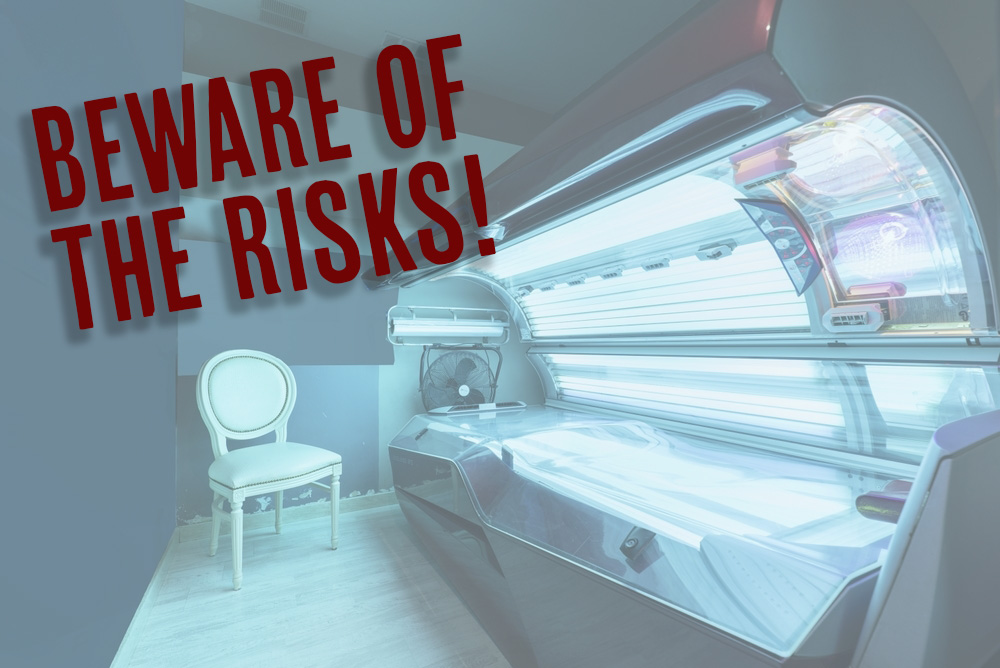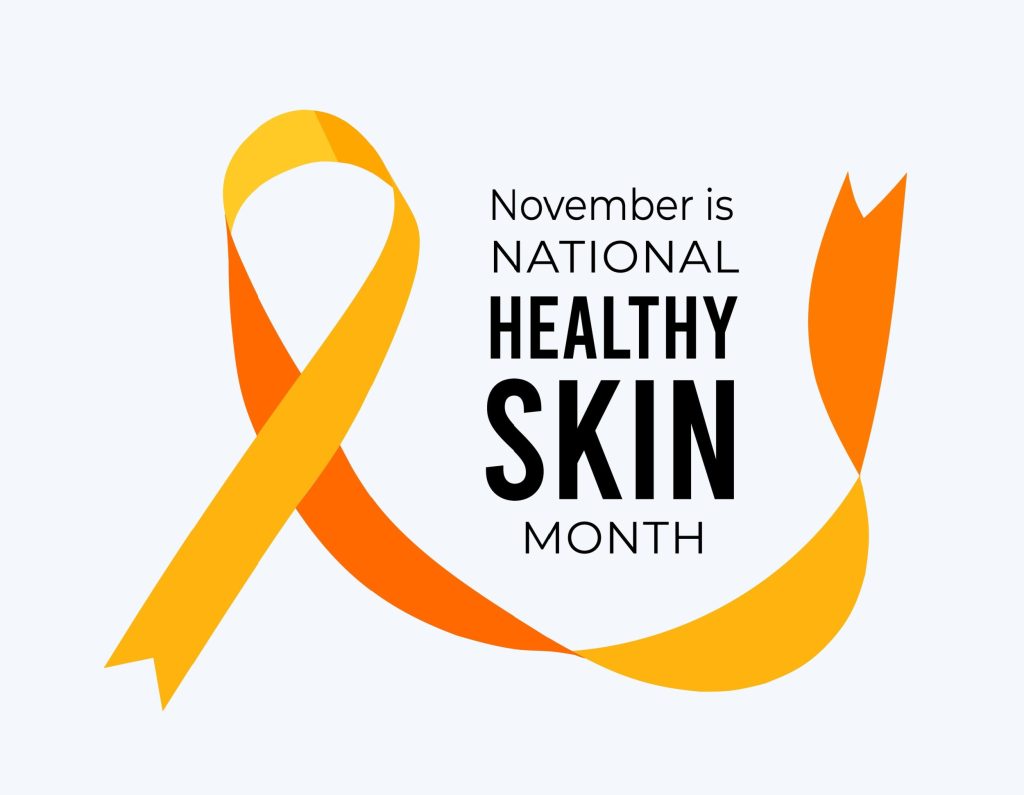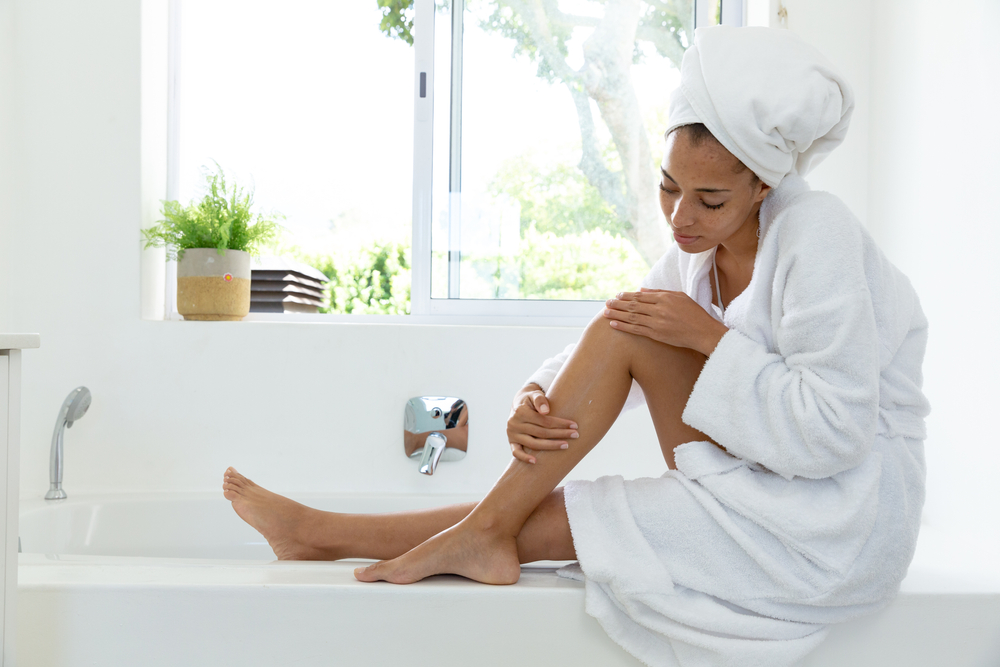
As spring approaches and more people opt to spend extra time outdoors, it may be tempting to head to an indoor tanning salon to get a head start on a sun-kissed glow. While most people associate a warm, bronze tan with health and vitality, a tan is actually a visible sign of skin cell damage. When you tan, your body produces more melanin than normal, which is the pigment responsible for skin darkening. Exposure to intense bursts of UV radiation, either from the sun or from a tanning lamp aids in the production of increased melanin. UVA and UVB rays are harmful to your skin and can cause a whole host of problems, including wrinkles, saggy or leathery skin, and brown spots, to name a few. Long-term exposure to ultraviolet radiation can cause immune suppression, eye damage, and cataracts.
While the physical effects of tanning are daunting, the most extreme danger by far is the increased risk for developing skin cancer. According to the Skin Cancer Foundation, nearly 90 percent of all melanomas are caused by UV radiation exposure. Not only does tanning – whether via natural or artificial means – increase your chances of developing skin cancers such as melanomas, squamous cell, and basal cell carcinomas, it also increases the chance that a benign mole will progress to cancer.
Indoor Tanning Myths
- Tanning provides a healthy dose of Vitamin D.
FALSE – it provides a high dose of ultraviolet radiation in the form of UVA and UVB waves. Exposure to UVB waves synthesizes Vitamin D, but the risk of leaving your skin bare to harmful radiation outweighs any beneficial vitamins it might absorb from the sun or a tanning lamp. Ingesting your Vitamin D via food or a supplement is healthier and less harmful to your body.
- A “base tan” provides skin protection before going outside.
FALSE – a base tan is comparable to applying SPF 2-4 sunscreen. The minimal SPF recommended for skin protection is SPF 30. Any form of tan is already a sign of skin cell damage, and a base tan will not protect you from sustaining further damage from natural sunlight. - Indoor tanning is safer than outdoor tanning.
FALSE – using an indoor method is equally dangerous, if not more so, than building a natural tan via the sun. Tanning beds subject your skin to an unwavering, intense treatment of ultraviolet radiation, which can lead to your body soaking up more UV exposure than it would while catching a few rays outside.
Indoor Tanning Quick Facts
- The World Health Organization includes ultraviolet (UV) tanning devices in its Group 1, a list of agents that are cancer-causing to humans. Group 1 also includes agents such as plutonium, cigarettes, and solar UV radiation.
- According to the Skin Cancer Foundation:
- More than 419,000 cases of skin cancer in the U.S. each year are linked to indoor tanning.
- People who first use a tanning bed before age 35 increase their risk for melanoma by 75 percent, and according to researchers, 97% of women diagnosed with melanoma before age 30 have engaged in indoor tanning.
- Women who have tanned indoors are six times more likely to be diagnosed with melanoma in their 20s than those who have never tanned indoors.
- From ages 15 to 39, men are 55 percent more likely to die of melanoma than women in the same age group.
- There’s no such thing as a safe tanning bed, tanning booth, or sun lamp.
- Indoor tanning can cause premature aging including wrinkles, sunspots, and tough, leathery skin.
- Indoor tanning can cause a low immune response, eye health deterioration, and allergic reactions.
- According to the American Academy of Dermatology, every time you get a tan or burn, you cause damage to the DNA in your skin.
- Even if you have been an avid indoor tanner, it’s imperative that you stop right away and take preventative measures to protect the skin you have.
- The Skin Cancer Foundation cites that “indoor tanning devices can emit UV radiation in amounts 10 to 15 times higher than the sun at its peak intensity, and more people develop skin cancer because of indoor tanning than develop lung cancer because of smoking.”
Like other cancer-causing agents such as tobacco, tanning can be addictive because it releases feel-good endorphins in the “reward” section of the brain. Because a habit is much harder to break once it is established, it’s important not to give in to the temptation to start indoor tanning. If you feel that you want a darker complexion, sunless tanners are a much safer option. With sunless tanning, you avoid a risk of skin cancer, and often can control the level of the tan with the product you choose to use. Even with the use of sunless tanners, it’s still necessary that you use a sunscreen with UVA/UVB protection and wear protective clothing daily. FLDSCC, along with The Skin Cancer Foundation recommends wearing an SPF of 30 or higher if you are going to be out and about or exposed to the sun for any length of time.
Following a proper sun care regimen every day is the best way to prevent skin cancer from developing. Before you decide to use a tanning bed, think again. Your health is far more important than the sun-damaging effects of tanning. If you notice a mole or brown spot that changes in color, size, or texture over time, it’s important to visit your dermatologist for a comprehensive exam.
Early identification and diagnosis of cancerous lesions increases the likelihood that treatment will be successful. To make a diagnosis, your dermatologist will perform a skin examination, and determine next steps. Depending on the size, location and severity of the mole, several treatment options are available to remove cancerous cells, including Mohs micrographic surgery, the most effective technique for most types of skin cancers, with minimal scarring or risk.
About Us
Florida Dermatology and Skin Cancer Centers provides a full spectrum of dermatology and skin care services, and its team of physicians, APRNs, and PAs are experts in diagnosing and treating skin cancers, as well as skin conditions and diseases such as eczema, rosacea, dry skin, rashes, warts and more.
For more information, or to schedule a comprehensive annual skin exam, call (855) FLD-SKIN, or visit www.fldscc.com.


